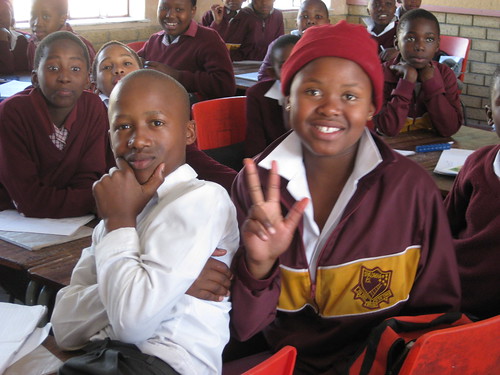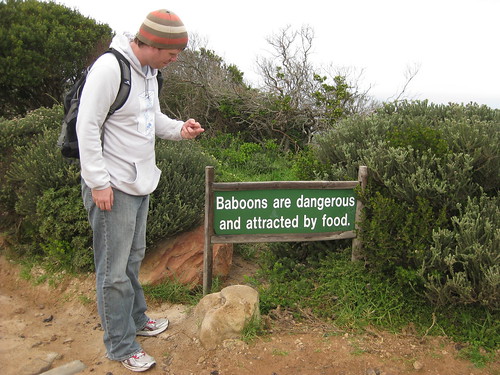 22 July 09
22 July 09
During our final week in South Africa, we were able to get into the schools of the teacher’s we had worked with the first week at Liwa Primary. I asked to pair up with Rachelle, who teaches G8 English and G9 Econ at Siyazakha Primary School. Her energy and excitement after the first week were infectious and I wanted to see her in her element.
I was not disappointed. Working with 40+ learners in a classroom, Rachelle designed lessons that were engaging and tailored to her learners’ needs. That’s something many teachers state-side could benefit from.
Her English learners’ final task at the end of the previous term had been to compose a journal entry about an event in their lives. From her marking of the tasks, Rachelle noted that the bulk of her learners were struggling with the proper choice and use of prepositions in their writing. A quick survey of the students’ writing confirmed frequent composition such as, “My mother has me go to the store to her money on the bank.”
To review, Rachelle first wrote the word “preposition” on the chalk board that stood on its end in front of its former mount. (The boards had been removed over the holidays in the rooms that would eventually be receiving SMART Boards sometime in the coming months.) From there, she drew a box around, “position” and asked her learners what words came to mind when they saw the word “position.” Within minutes, the class had constructed a mindmap of the word which allowed Rachelle to explain, “A preposition is a word that’s used to help explain something’s position, location or place compared to something else.”
She then asked a handful of learners to position themselves at specific points around the classroom and then had their classmates describe where they were in the classroom and identify the prepositions in the sentences they constructed. Everyone could be successful and the entire class was visibly engaged.
Content her review had achieved its desired result and running out of time, Rachelle assigned homework. Each learner was to find 5 pictures from magazines, newspapers and the like and paste each picture on a piece of paper. Next to each picture, the learners were to write one sentence describing something in the picture as it related to the location of something else. As a final touch, the learners were to underline the prepositions in each of their sentences.
At first, my reaction to all of this was to admire the lesson, but worry about its content given the fact that these were Grade 8 learners. Then reality set in. The mother tongue of the children in the townships is Xhosa. They only begin formal English instruction in Grade 4. Considering their training was only 3.5 years old, they were exactly where I’d expect learners of their experience to be if not a little ahead of the game.
This all works toward the point that given an extreme lack of resources, an over-crowded classroom, and personal stories from each learner that could easily have become an insurmountable barrier, this was quality instruction based on the needs of the learners involved. It all-encompassing – in a few of the classrooms I observed during my time at the school, a class’ teacher was simply missing. And, it wasn’t ideal – I’m sure not each and every learner got the full, personal attention he or she would have benefitted from. What is was was exactly what all strong teachers do, making the most out of what they have. I’m not sure more can be asked than that.
 As promised, I’ve been working on processing the first few days of our time here in CPT.
As promised, I’ve been working on processing the first few days of our time here in CPT.
 7-14-09
7-14-09
 Wikipedia
Wikipedia In South African educational parlance, teachers don’t teach “students,” they teach “learners.” I like that.
In South African educational parlance, teachers don’t teach “students,” they teach “learners.” I like that.